Michael Kareken emailed me recently to show me some exciting new drawings of wrecked cars at a salvage yard he’s been working on, exploring a possible new body of work that grows from his incredible exploration of his recycle series subject matter. These drawings are all works in progress but I find that all the more interesting to see this work in its formative stages. While Michael’s work isn’t strictly perceptual based he does transform the photographic reference material into painterly inventions and with a strong underlying abstract structure. While he hasn’t yet evolved to making completed paintings from this new body of work his previous painting often evolve from this exploratory drawing from photos and memory and then goes onto to making highly realized forms that take on the look of painting from perceived, not photographic, reality. His strong gestural and emotive response to this subject matter gives the work a dynamic quality; like an abstract-expressionist realism.
Last year I got to view his big Minneapolis Institute of Art Museum show and conduct my own video interview with him. There is a delightful TV interview with him made with him fairly recently that I’ll also share here after the fold. It shows his process and some great shots of him at the salvage yard.
(the embed player sometimes seems a bit slow to load but I found if you just click on it anyway it starts streaming. The interview starts after a minute of introduction)
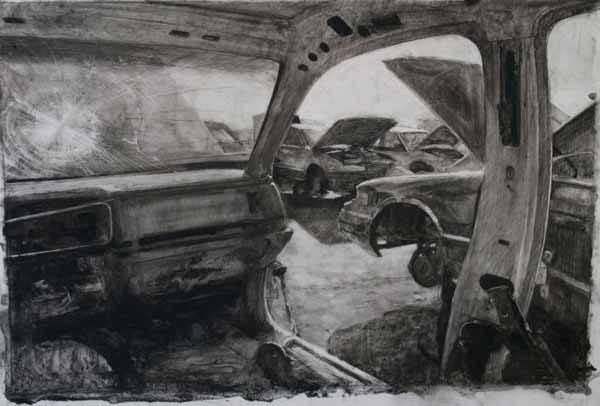
(click for larger view – true for all the images in this article

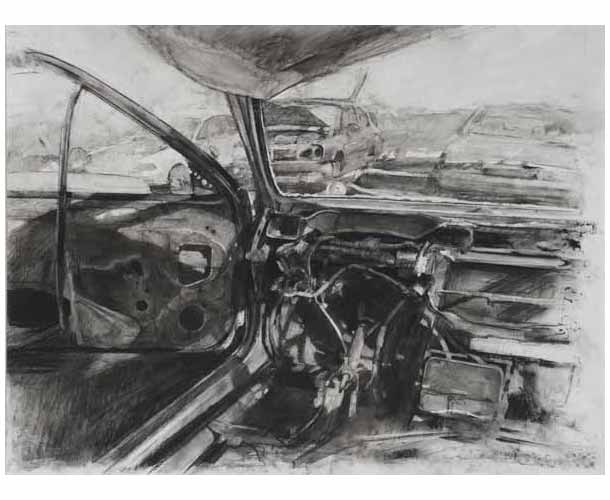
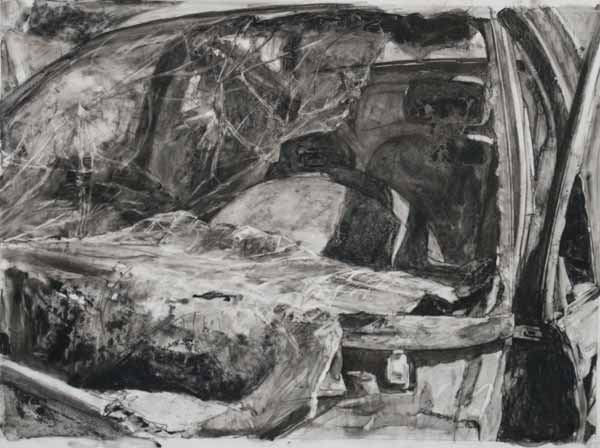
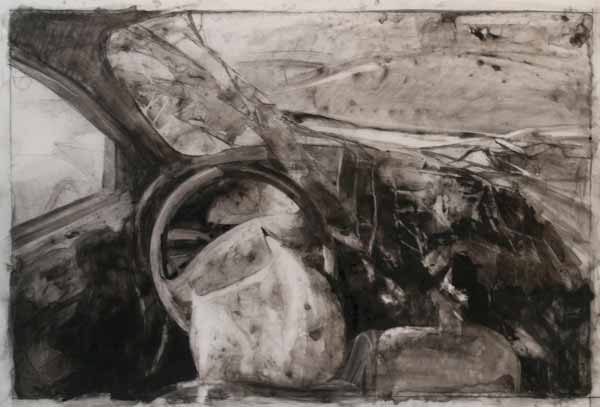
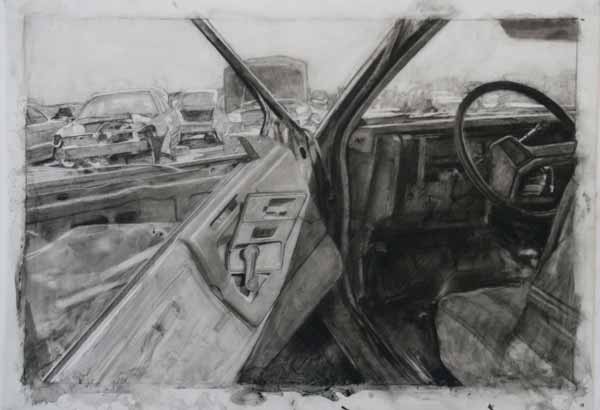
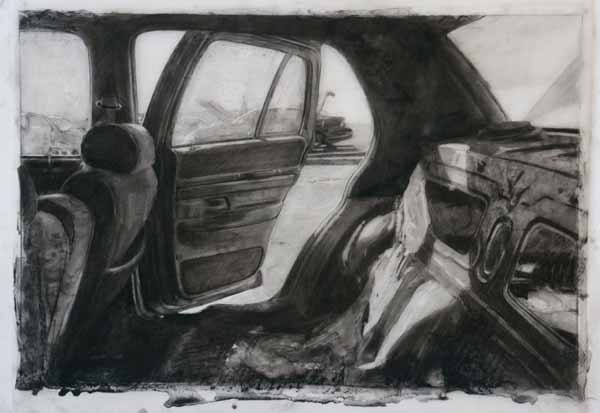
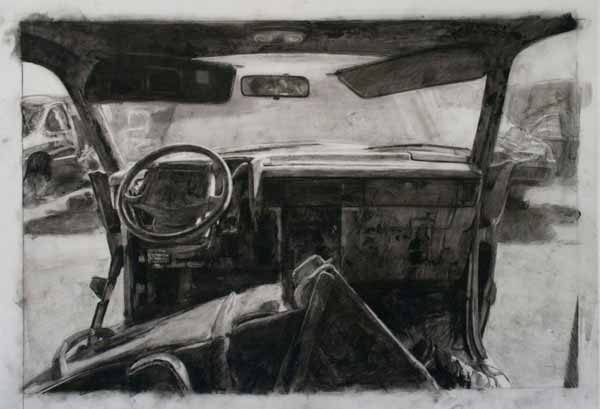
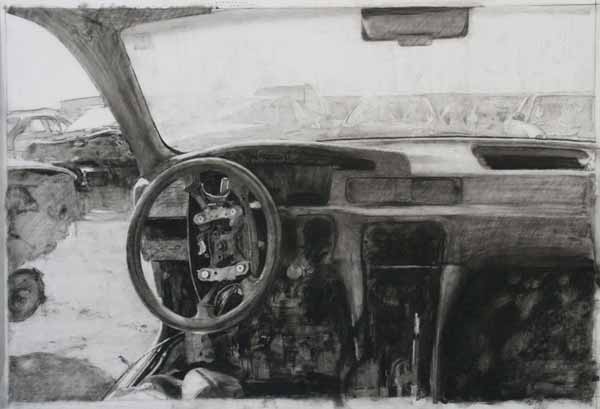
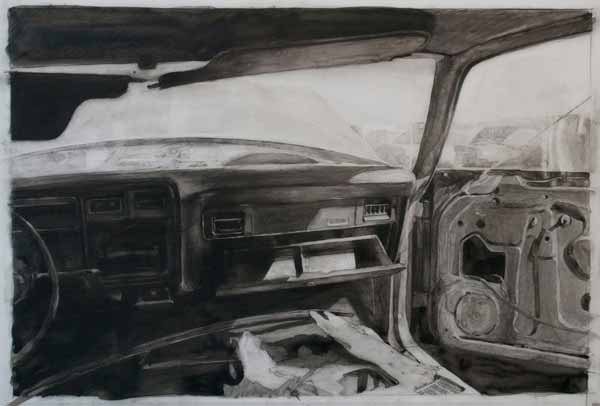
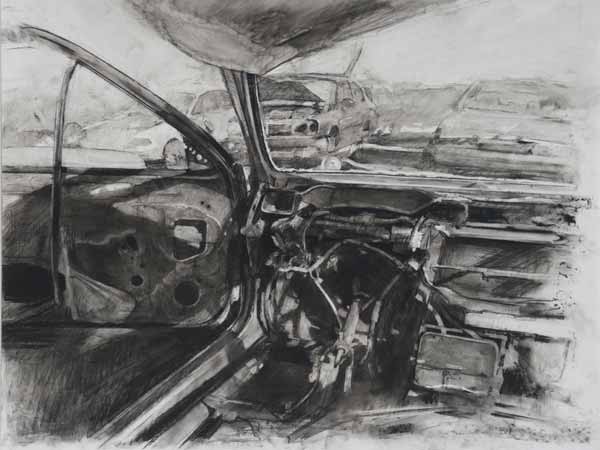

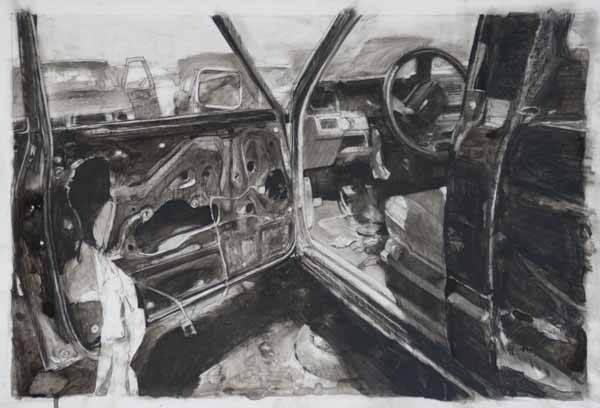




Interesting interview…he seems to be very well connected to his subject matter, not only on a visual level, but an emotional one, as well. I never would have guessed the stages his paintings passed through to get to the final product… I can definitely see his love of AbEx painting, deKooning in particular. I’d love to see his paintings in person, as I’m interested in what the surface quality is like. I feel that his use of the photograph acts not only as a source material, but as an extension of his overall process…something of a photographic sketchbook. Very cool…
It was fascinating to see Michael Kareken working on a drawing in the video, since I knew from the drawings above that he used water in some way. All the splotching, scraping, daubing, wiping, and marking all leading to a beautiful surface. They give me some new ideas. Thank you.
I really take joy in viewing the fluid, juxtaposed interplay of painterly “mechanisms” that are the “characters” in the work of Michael Kareken. His intensity of excitement and involvement remains true from inception, to execution, and on to the wall. Great stuff… When viewing the bottle paintings Pollock’s quote, “My paintings do not have a center, but depend on the same amount of information throughouT” comes to mind. He might be called the “Sergent of the scrap heap”; he has that kind of facility. My favorite Sargent’s were always the oils and watercolors of sunbleached rocks and natural forms he painted towards the end of his life in the American west.”Yoho Falls” 1916 is a good example. I hope to see more developments in the salvage yard work.